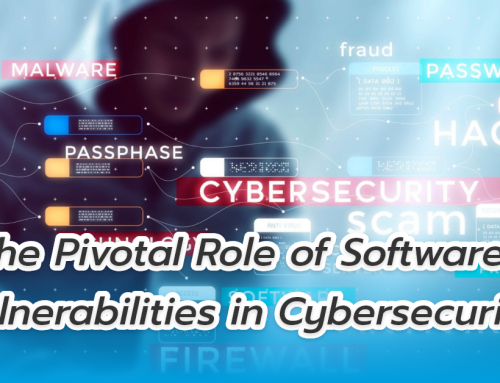The Menace of Malware and Ransomware
In the ever-evolving landscape of cybersecurity, two notorious adversaries stand out, wreaking havoc on individuals and organizations alike malware and ransomware. These malicious entities have become synonymous with cyber threats, causing financial losses, compromising sensitive data, and disrupting operations. This article dives into the world of malware and ransomware, exploring their characteristics, the risks they pose, and the measures individuals and organizations can take to fortify their digital defenses.
Understanding Malware
The term “malware” is a broad category encompassing various types of malicious software designed to compromise the integrity of a computer system or network. Malware can take numerous forms, each serving a distinct, and often nefarious, purpose
- Viruses
Viruses are programs that attach themselves to legitimate files, spreading when the infected files are executed. They often aim to corrupt or destroy data, and they can propagate through email attachments, infected websites, or compromised software.
- Worms
Worms are standalone programs that replicate themselves across networks without the need for a host file. They exploit vulnerabilities to spread rapidly, impacting the performance and stability of affected systems.
- Trojan Horses
Trojans disguise themselves as legitimate software to trick users into downloading and executing them. Once activated, Trojans can create backdoors for attackers, facilitating unauthorized access to the system.
- Spyware
Spyware is designed to covertly collect information about a user’s activities without their knowledge. This can include keystrokes, browsing habits, and sensitive personal information.
- Adware
Adware bombards users with unwanted advertisements, often redirecting web browsers and degrading system performance. While not always malicious, adware can be disruptive and compromise user experience.
Understanding Ransomware
Ransomware represents a specific type of malware that takes extortion to a new level. Instead of merely compromising data or systems, ransomware encrypts files, rendering them inaccessible. Attackers then demand a ransom payment, usually in cryptocurrency, in exchange for the decryption key.
- Encryption
Ransomware employs advanced encryption algorithms to lock files, making them unreadable without the decryption key. This renders critical data, such as documents, images, or databases, inaccessible to the victim.
- Payment Demands
Once files are encrypted, victims receive a ransom demand, often accompanied by a countdown timer to create a sense of urgency. Payment is typically demanded in cryptocurrency, providing a degree of anonymity for the attackers.
- Propagation Techniques
Ransomware can spread through various vectors, including malicious email attachments, infected websites, or exploiting software vulnerabilities. Some sophisticated variants use advanced tactics like spear-phishing to target specific individuals or organizations.
Mitigating the Risks
- Regular Backups
Regularly backing up critical data is a fundamental defense against ransomware. In the event of an attack, having up-to-date backups ensures that files can be restored without succumbing to extortion demands.
- Security Software
Employing reputable antivirus and anti-malware solutions helps detect and neutralize threats before they can compromise a system. Regular updates to these security tools are crucial to staying ahead of emerging threats.
- User Education
Educating users about cybersecurity best practices, such as avoiding suspicious email attachments, practicing safe browsing habits, and recognizing phishing attempts, is vital in preventing malware infections.
- Patching and Updates
Keeping operating systems, software, and applications up-to-date with the latest patches is essential for closing security vulnerabilities that malware often exploits.
- Network Security
Implementing robust network security measures, including firewalls and intrusion detection systems, adds an extra layer of protection against malware and ransomware.
Conclusion
Malware and ransomware represent persistent and evolving threats in the digital age. As cybercriminals continue to refine their tactics, individuals and organizations must remain vigilant and proactive in their cybersecurity efforts. By understanding the nature of these threats and implementing a comprehensive defense strategy, we can collectively fortify our digital environments against the malicious forces that seek to compromise our data, privacy, and digital livelihoods.
For those of you who want to make an E-Commerce app, a shopping app or a Delivery app, we recommend SC-Spark Solution, an app making company. experienced With direct experience from Silicon Valley, being a company that develops more than 100 applications around the world, both custom and ready-made for you to choose from. If anyone is interested in making mobile applications or websites, you can contact here
Contact us at
Facebook : SC-Spark Solution บริการทำแอปพลิเคชั่น
“Nothing is impossible”







